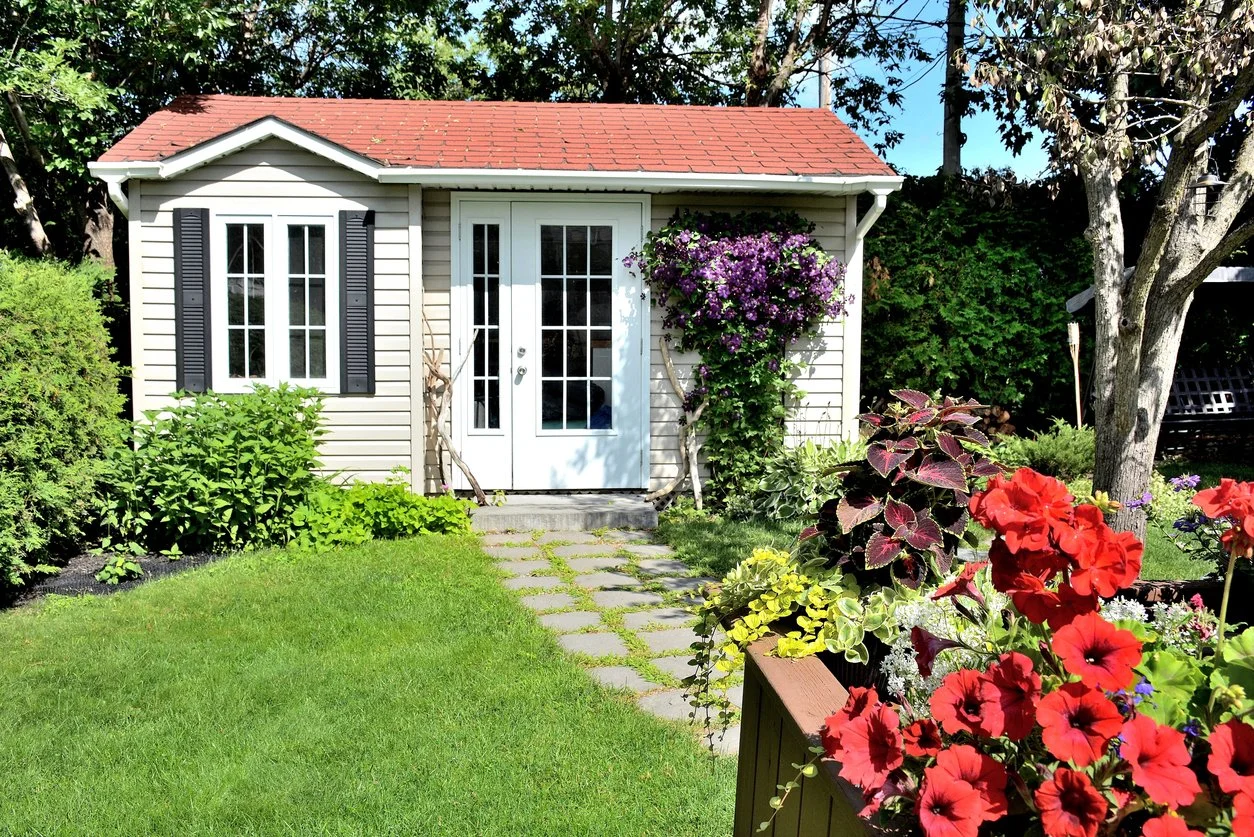Atlanta ADU Laws and Regulations: A Complete Guide
A detached ADU in an Atlanta neighborhood
Your home isn’t just a place to live—it’s an evolving space with the potential to adapt, grow, and support the changing needs of your family. For many Atlanta homeowners, building an Accessory Dwelling Unit (ADU) is one of the smartest ways to unlock that potential. Whether you're planning space for aging parents, a private rental for supplemental income, or a cozy guest suite, an ADU offers flexibility, value, and long-term functionality.
But before construction begins, it’s essential to understand the local laws and zoning regulations that govern ADUs in the City of Atlanta. At Heide Contracting, we specialize in turning underused space into high-performing living areas—and we know that a successful project always starts with smart planning and compliance.
That’s why we’ve created this comprehensive guide—to help Atlanta homeowners like you navigate the zoning districts, permit requirements, and code considerations that shape your ADU project. With a clear understanding of what's allowed (and what’s not), you’ll be empowered to move forward with confidence.
We’ll cover everything you need to know, including:
Where ADUs are allowed in Atlanta
Maximum size, height, and placement rules
Permit and inspection requirements
Special restrictions in historic and overlay districts
The steps to building an ADU from idea to occupancy
Whether you’re dreaming of a sleek detached studio or converting an underused garage into a rental-ready space, Heide Contracting is here to guide you every step of the way—from code compliance to final finishes. Let’s turn your vision into a legal, livable reality.
Click to jump right in:
Zoning Requirements for ADUs in Atlanta
Building Code and Permitting Requirements for Atlanta ADUs
Types of ADUs and Associated Regulations
Special Considerations for ADUs in Atlanta
Steps to Build an ADU in Atlanta
Call (470) 469-5627 if you have questions about ADU laws in Atlanta. Heide Contracting is here to help!
Zoning Requirements for ADUs in Atlanta Georgia
Screenshot of Atlanta GIS zoning map with zoning layers visible
Before you begin designing your accessory dwelling unit (ADU), it’s crucial to understand what your property is zoned for—and what that means for your project. Zoning laws determine where ADUs are allowed, how large they can be, and where they can be placed on your lot.
At Heide Contracting, we believe that zoning should be a starting point—not a roadblock. Our team is well-versed in Atlanta’s ADU zoning regulations and works closely with homeowners to turn city code into creative, compliant designs that truly work for their property.
Here’s a breakdown of the key zoning requirements that impact ADUs in the City of Atlanta:
Permitted Zoning Districts:
ADUs are allowed in several residential zoning districts, including:
R-4: Traditional single-family residential zones
R-4A: Higher-density single-family residential zones
R-5: Zones allowing duplexes and small multi-family zones
Each of these districts comes with specific guidelines that determine what’s possible on your property—but if your home falls within one of these zones, you’re off to a great start.
Size and Coverage:
To keep developments in scale with the surrounding neighborhood, Atlanta sets clear rules for how much space your ADU can occupy:
Maximum ADU size: 750 square feet
Total lot coverage (main house + ADU): Cannot exceed 55% of the total lot area
Rear yard coverage (by ADU only): Cannot exceed 25%
These guidelines help ensure a balance between adding new living space and preserving green space, privacy, and airflow for surrounding properties.
Height and Setbacks
Your ADU must meet the following structural placement guidelines:
Maximum height: 20 feet
Minimum setbacks: 4 feet from side and rear property lines
Setbacks ensure that your structure respects property boundaries and doesn’t infringe on a neighbor’s light, air, or privacy—especially in tighter residential neighborhoods.
Floor Area Ratio (FAR)
Illustrated diagram showing FAR calculation concept
Atlanta also regulates something called the Floor Area Ratio (FAR)—the total square footage of all structures on the property divided by the lot size.
FAR limit: 50% of the lot area (combined total of main home and ADU)
Small lots: May qualify for FAR adjustments or exceptions depending on unique site conditions
Our team at Heide Contracting can help you calculate FAR and determine how your ADU fits into the big picture—literally.
Understanding these zoning fundamentals early in the process saves time, prevents costly redesigns, and ensures your project stays on track. When you work with Heide Contracting, we’ll verify your property’s zoning classification, walk through any limitations or opportunities, and help design a space that not only meets your needs—but checks every regulatory box.
In Atlanta, basements are generally excluded from the calculation of Floor Area Ratio (FAR) when determining the maximum allowable building size on a lot. This means the finished or unfinished basement space is not included in the overall floor area used to calculate the FAR.
This exception creates a unique opportunity for homeowners looking to maximize usable space without triggering FAR limitations. By finishing an existing basement, lowering a basement floor, or incorporating an underground addition through a crawl space to basement conversion into your ADU plans, you can significantly expand your livable square footage—without affecting your property’s compliance with FAR limits.
Whether you're envisioning a rentable basement apartment, a private suite for extended family, or a dedicated home office, taking advantage of the basement exemption allows you to stay within zoning regulations while gaining the functionality of a much larger home. Heide Contracting can help you assess your property’s basement potential and integrate it seamlessly into your overall ADU strategy.
R-4 Zoning: Traditional Single-Family Neighborhoods
Craftsman-style home with detached ADU in backyard
R-4 zoning districts are designed for detached, single-family homes—and are one of the most common residential zones in Atlanta. If your property falls within this category, you may be eligible to add an accessory dwelling unit (ADU) up to 750 square feet, as long as it follows the city’s size, height, and setback rules.
That means your ADU must:
Stay under 20 feet in height
Maintain at least 4 feet of distance from side and rear property lines
Remain within total lot coverage and floor area limits
R-4 zones are ideal for homeowners who want to create a private, secondary living space—like a guest house or in-law suite—while maintaining the quiet charm of a single-family neighborhood. At Heide Contracting, we help clients navigate these regulations to design ADUs that blend beautifully into the surroundings.
R-4A Zoning: Higher-Density Single-Family Residential Zones
R-4A zoning allows for slightly denser housing than R-4—but still within a single-family residential framework. These lots tend to be a bit smaller, so it's especially important to plan carefully to stay within ADU limits of 750 square feet, height, and lot coverage.
Just like in R-4 zones, your ADU must:
Match the main structure’s architectural style
Meet all relevant building and safety codes
Share utilities with the primary home
R-4A is a great opportunity to add affordable, flexible housing—and Heide Contracting is here to make sure your addition enhances both your home and the neighborhood.
Think Below the Surface: A Creative Solution for Smaller Lots
On tighter R-4A lots where space is at a premium, building out may not be the best option—but building down can be. Converting an underused crawl space, lowering your basement floor, or expanding an existing basement can unlock valuable square footage without affecting your lot coverage or height limits. These underground additions offer privacy, insulation, and long-term value—all while keeping your yard and exterior footprint intact.
At Heide Contracting, we specialize in these types of conversions and can help you assess whether your property is a good candidate for below-grade construction. When above-ground options are limited, the best solution might be right beneath your feet.
R-5 Zoning: Duplex and Multi-Family Residential Zones (The Most Flexible)
If your property is zoned R-5, you’re in the most versatile district when it comes to ADU development. R-5 zoning accommodates single-family homes, duplexes, and small multi-family units, making it ideal for property owners looking to expand living space or rental opportunities.
ADUs in R-5 zones:
Are still limited to 750 square feet
Must adhere to the 20-foot height cap and 4-foot setbacks
Often allow for greater rear yard coverage and more flexibility with utility connections
Whether you're building a standalone rental unit, guest quarters, or multigenerational suite, Heide Contracting helps you take full advantage of the zoning flexibility while staying compliant with Atlanta’s ADU laws.
Ready to Grow Your Home? Let’s Find the Right Solution for You.
Your home has more potential than you think—and whether that means building up, out, or below, we’re here to help you unlock every square foot. At Heide Contracting, we specialize in smart, code-compliant additions that add space, function, and value—without compromising the charm that makes your home uniquely yours.
From backyard ADUs and garage conversions to basement expansions and crawl space transformations, our team will work with you to design the solution that fits your needs, your lot, and your lifestyle.
Let’s create the extra space you’ve been dreaming of—legally, beautifully, and built to last.
Or call (470) 469-5627 to talk with a project expert.





